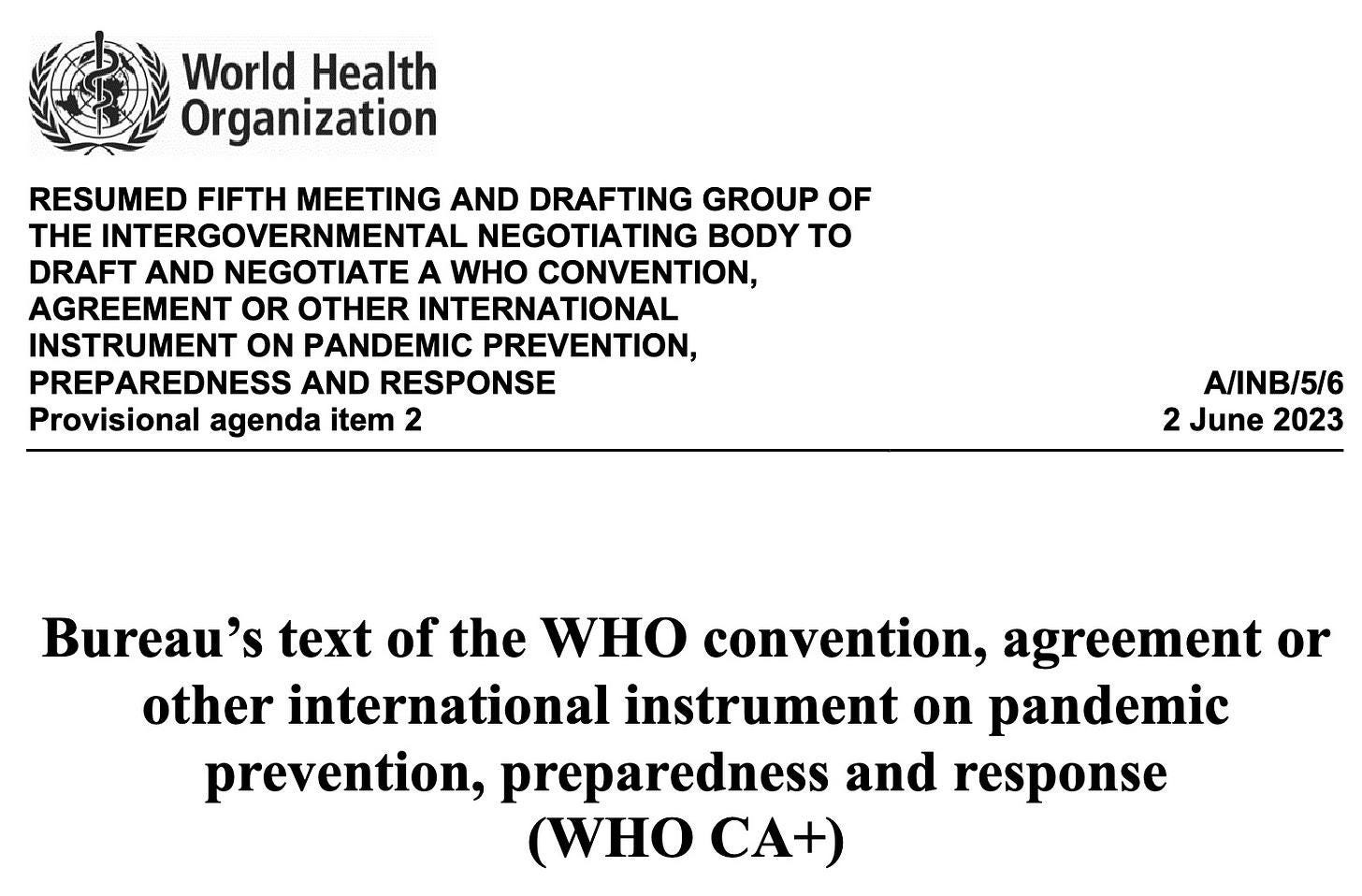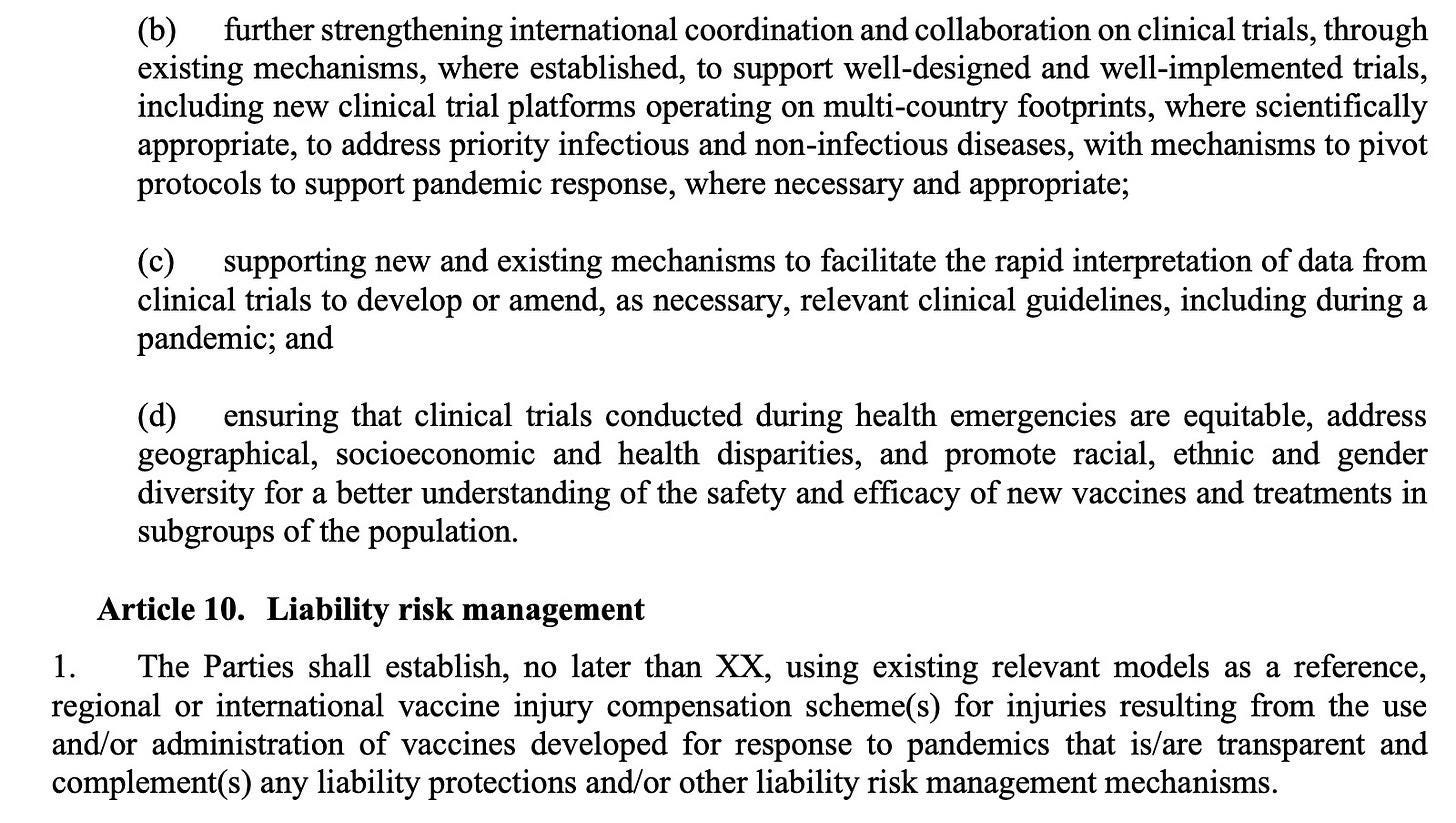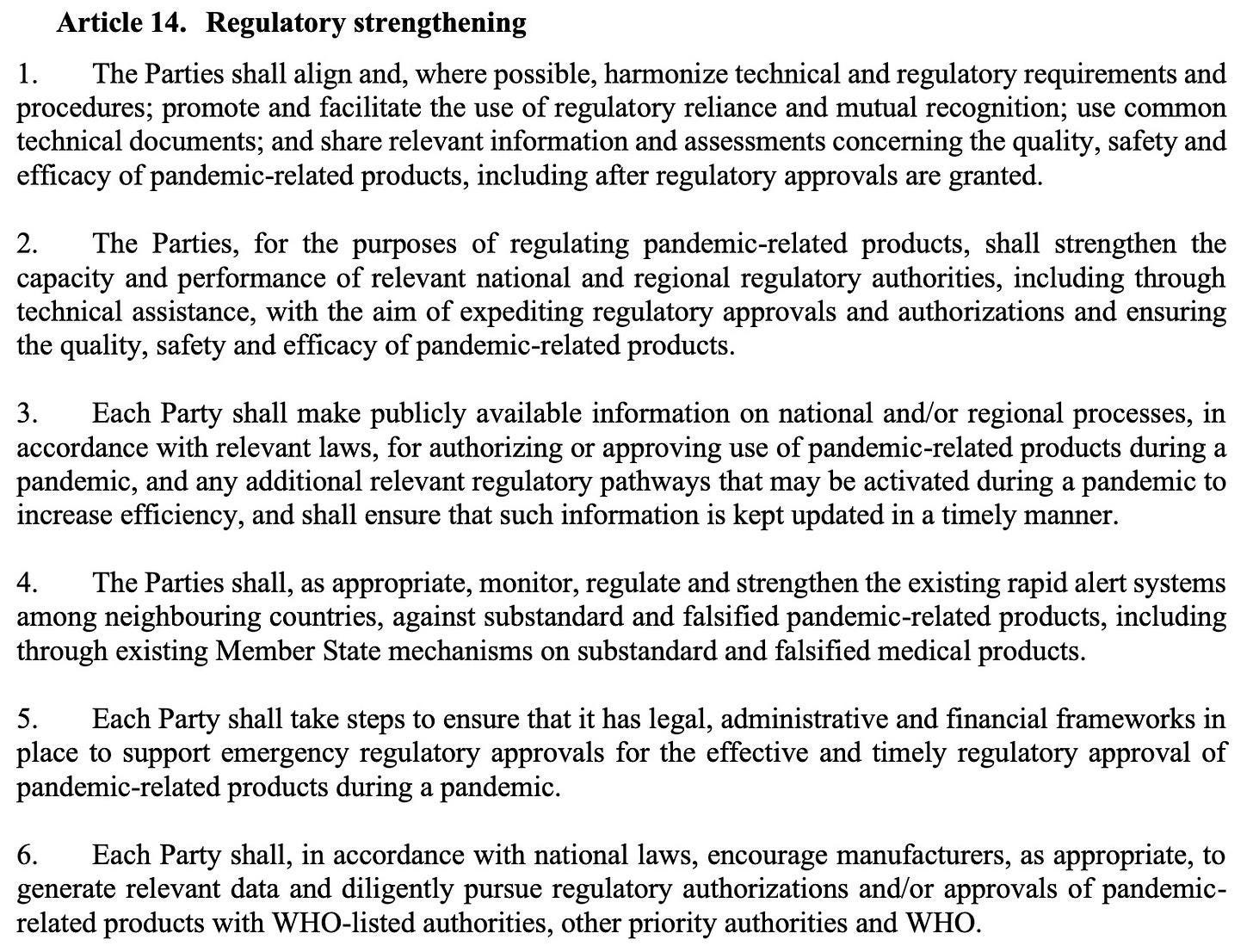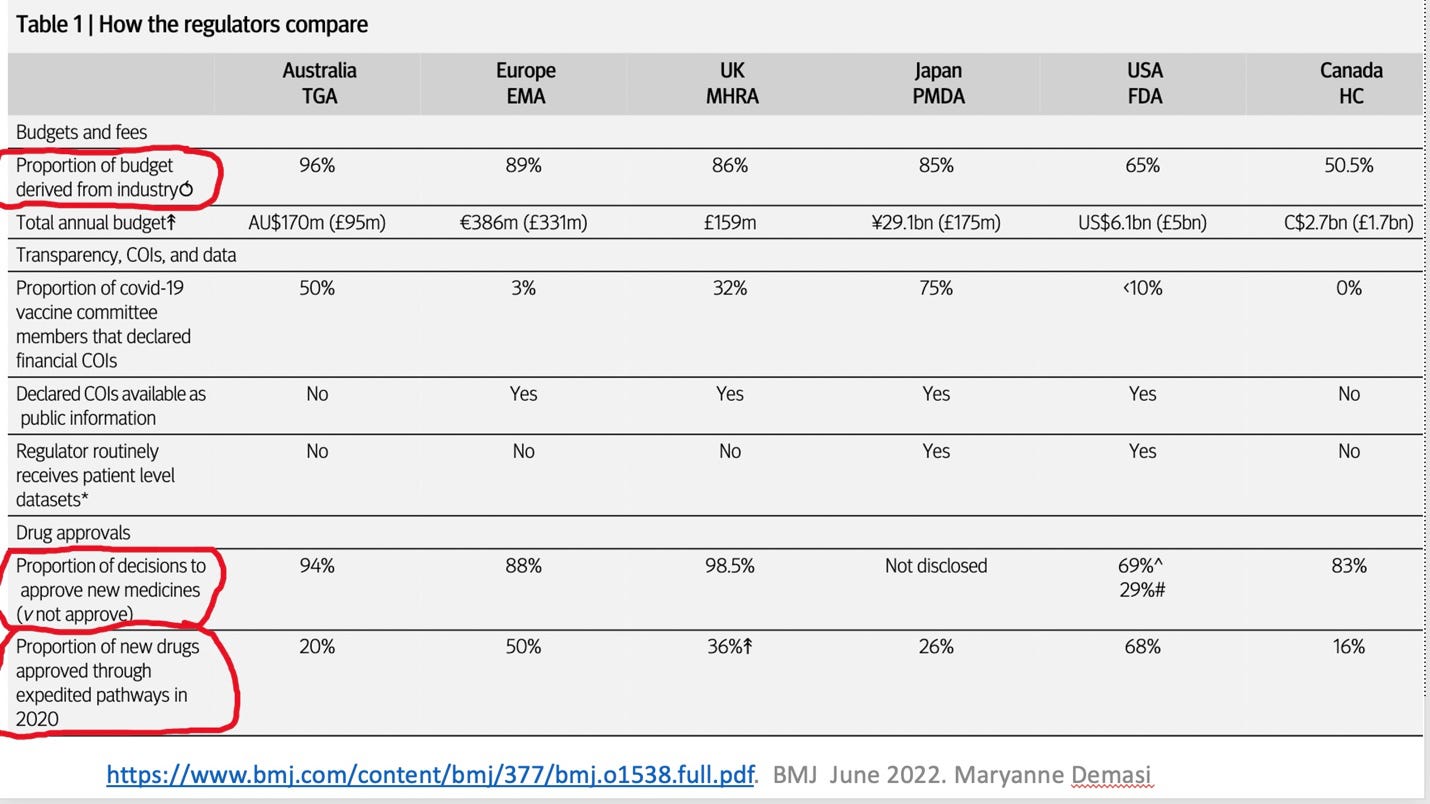Man-Made Pandemics, Gain of Function Research, and the WHO (Part 2)
We are pleased to republish the following article by our friend Meryl Nass, M.D., a member of Children’s Health Defense (CHD) Science Advisory Board. CHD is an official WCH coalition partner.
This is part two of an in-depth article by Dr Meryl Nass. Click here to read part one. To learn more about the subject, watch Meryl’s recent appearance on Better Way Live.
The Genomic Sequencing Conundrum
And governments are to commit to building biolabs that must include genomic sequencing. No explanation has been forthcoming about why each nation needs to install its own genome sequencing laboratories. Of course, they would sequence the many viruses that will be detected as a result of the pathogen surveillance activities nations must perform, according to the WHO treaty draft. But the same techniques can be used to sequence human genomes.
The fact that the EU, UK, and US are currently engaged in projects to sequence about 2 million of their citizens’ genomes provides a hint they may want to collect additional genomes of Africans, Asians, and others.
This might fly as simply sharing state-of-the-art science with our less-developed neighbors. But it is curious that there is so much emphasis on genomics, compared to the absence of any discussion about developing repurposed drugs for pandemics in either the draft treaty or IHR amendments.
We must not forget that virtually all developed nations, in lockstep, restricted the use of safe generic hydroxychloroquine, ivermectin, and related drugs during the pandemic. In retrospect, the only logical explanation for this unprecedented action was to preserve the market for expensive patentable drugs and vaccines, and possibly to prolong the pandemic.
US law only allows unlicensed, emergency use authorized (EUA) vaccines and drugs to be used if there is no adequate, approved (licensed) and available drug for the same purpose. If the US government admitted that existing, approved drugs could prevent and/or treat COVID, it would need to immediately revoke all the EUA vaccines and drugs for COVID. This is one explanation for why these drugs have been vilified and suppressed by our state and federal agencies.
Genomes offer great potential profits, as well as providing the substrate for transhumanist experiments that could include designer babies among other things.
The latest version (aka the WHO Bureau draft) of the pandemic treaty can be accessed here. I provide screenshots below to illustrate additional points.
Draft pages 10 and 11:
The WHO Treaty Draft Incentivizes Gain-of-Function Research
What else is in the Treaty? Gain-of-Function research (designed to make microorganisms more transmissible or more pathogenic) is explicitly incentivized by the treaty. The treaty demands that administrative hurdles to such research must be minimized, while unintended consequences (aka pandemics) should be prevented. But of course, when you perform this type of research, some leaks and losses of agents will always occur. The joint CDC-USDA Federal Select Agent Program (FSAP) keeps track of research on potential pandemic pathogens. As the FSAP describes itself,
"The Federal Select Agent Program oversees the possession, use and transfer of biological select agents and toxins, which have the potential to pose a severe threat to public, animal or plant health or to animal or plant products."
FSAP reports reveal that there are about 200 accidents or escapes yearly from labs situated in the US. (There is no accounting of accidents outside the US.) The FSAP annual report for 2021 notes:
“In 2021, FSAP received 8 reports of losses, 177 reports of releases, and no reports of thefts.”
While scientists do their best to protect themselves and maintain lab safety, research on deadly pathogens simply cannot be performed without risks both to the researchers and the outside world.
Draft page 14:
Vaccines Will Be Rolled Out Speedily Under Abbreviated Future Testing Protocols
Vaccines normally take 10-15 years to be developed. In case you thought the COVID vaccines took too long to be rolled out (326 days from availability of the viral sequence to authorization of the first US COVID vaccine) the WHO treaty draft has plans to shorten testing. There will be new clinical trial platforms. Nations must increase clinical trial capacity. (Might that mean mandating people to be human subjects in out-of-the-way places like Africa, for example?) And there will be new “mechanisms to facilitate the rapid interpretation of data from clinical trials” as well as “strategies for managing liability risks.”
Draft page 14:
Manufacturer and Government Liability for Vaccine Injuries Must Be “Managed”
Nations are supposed to use “existing relevant models” as a reference for compensation of injuries due to pandemic vaccines. Of course, most countries do not have vaccine injury compensation schemes, and when they do the benefits are usually minimal.
Is the US government’s program to be a model of what gets implemented internationally?
There is only one way under US law to obtain compensation for an injury sustained from an EUA product. This is because under the PREP Act, lawsuits against manufacturers, government administrators and medical personnel administering vaccines and drugs are prohibited.
The sole US government scheme for injuries due to COVID pandemic products is called the Countermeasures Injury Compensation Program or CICP. It is extremely difficult to obtain any benefits through this program, even if your doctors assert that your injury resulted from an EUA product. Therefore, few people bother to apply, and few are even aware the program exists.
The statute of limitations for the CICP is a very brief twelve months, which means you must have documented that your injury was due to a vaccine or drug within 12 months of receiving the medical product. This can be extremely difficult when the federal health agencies deny such injuries exist.
Furthermore, the program will only pay for lost wages or health expenses that have not been covered by insurance. The CICP is a "payor of last resort," so if your health insurance covered your injury and your disability insurance covered lost wages, you are ineligible to collect benefits. The CICP will provide no compensation for attorney fees, expert witnesses, document preparation or pain and suffering, although the federal Vaccine Injury Compensation Program for childhood vaccine injuries pays those costs. There is no time limit by which a case must be adjudicated, so most cases languish for years without a decision. The program is purely administrative, and decisions regarding eligibility for benefits are made by the DHHS. There are no courts or judges and no published standards.
All pandemic EUA drugs and vaccines convey immunity from legal liability to their manufacturers and to everyone else involved in their use.
The CICP has compensated exactly 4 (yes, four) of the 12,000 applications for COVID product-related injuries as of August 1, 2023. The total amount paid out for the first 3 of the 4 compensated claims was $4,635, or less than $1,600 apiece, on average.
Slightly more than 1,000 claims have been adjudicated, while 10,887 are pending review.
In summary, 2% of the COVID cases reviewed by the CICP were deemed eligible for benefits, while only 0.2% of all COVID injury applications have received a payment from the CICP. No wonder so few people even bother to apply.
"Regulatory Strengthening"
The pandemic treaty draft also demands weakening the strict national regulation of medical drugs and vaccines during emergencies, under the rubric of “Regulatory Strengthening.” As announced in the UK recently, ‘trusted partner’ approvals will be used to speed licensure of medical products. This means that if a drug or vaccine has been approved by a partner country, the UK can adopt the partner's decision on licensure and bypass an independent analysis by UK regulators. What this does is move nations in the direction of a single regulatory agency approval or authorization, which would be immediately adopted by other nations.
Draft page 25:
One might predict that the least rigorous regulator would quickly be selected by product manufacturers to make licensing decisions on their products. Most nations' drug regulators are funded by pharmaceutical firms, who pay for the evaluations. It should come as no surprise that the % of their budgets that is funded by pharma is directly related to the % of drug approvals issued. We might even see the prices of drug evaluations paid by Pharma go up as the quality of the evaluations goes down. Below is fascinating information on the regulators of drugs and vaccines around the world and the public versus private funding they receive.
Next Up: Vaccines Developed in 100 Days
A plan to develop vaccines in 100 days and have them manufactured in 30 additional days has been widely publicized by the vaccine nonprofit CEPI, founded in 2017 by Bill Gates and Dr. Jeremy Farrar, who is now the WHO’s Chief Scientist. The plan has been echoed by the US and UK governments and received some buy-in from the G7 in 2021. This time frame would only allow for very brief testing in humans, or would limit testing to animals. Why would any country sign up for this? Is this what we want, to vaccinate the entire world, then find out the bad news later?
The plan furthermore depends on the vaccines only being tested for their ability to induce antibodies, which is termed immunogenicity, rather than being shown to actually prevent disease, at least during the initial vaccine rollout. My understanding of FDA regulation is that antibody levels are not an acceptable surrogate for immunity unless they have been shown to correlate with protection.
However, the FDA’s recent vaccine decisions have ignored that requirement and vaccines are now being approved based on antibody levels alone. But the induction of antibodies does not tell you whether they prevent infection. Sometimes they have promoted infection.
The FDA’s vaccine advisory committee has asked for better indicators of efficacy than just antibody levels for COVID vaccines. But despite lacking such data, the advisers voted anyway to approve or authorize vaccines over the past year, without knowing whether they actually work. I learned this from watching the FDA vaccine advisory meetings, as I provide a live blog of them and often detailed summaries on my Substack.
We all know how long it took for the public to become aware that the COVID vaccines failed to prevent transmission and only prevented cases for a period of weeks to months. The US government has still not officially admitted this, even though CDC Director Rochelle Walensky told CNN’s Wolf Blitzer the truth about transmission on August 6, 2021, 8 months after the Pfizer vaccine launched. How long will it take to learn whether vaccines launched in 100 days actually work?
You Can't Do Safety Testing for 100 Day Vaccines
It is really important for the public to understand that safety testing can only be accomplished in human beings, as animals react differently to drugs and vaccines than humans do. Therefore, limited testing in animals would mean there was no real safety testing. But testing vaccines in humans for only short periods is also unacceptable.
Testing vaccines during brief trials in humans (the Pfizer trials only followed a minority of subjects for a median of two months when the vaccine was authorized) allowed COVID vaccines to be rolled out without the public being aware they could cause any serious side effects, let alone myocarditis and sudden deaths.
You Can't Assess the Soundness of the Manufacturing Process for 100 Day Vaccines
Finally, following this rapid manufacturing plan, thorough testing for potential failures in the manufacturing process could not be performed. Scaling up from producing pilot lots to large scale manufacturing requires a whole new evaluation. With the current plan for far-flung, decentralized manufacturing facilities that are said to be necessary to achieve vaccine equity for all, there are nowhere near enough regulators who know how to inspect vaccine manufacturers.
Furthermore, the concept of so-called remote inspections of drug and vaccine manufacturers was introduced during the pandemic, and if continued as planned, this will successfully drive down the quality and value of facility inspections.
Will the WHO Respect Human Rights?
The need to respect “human rights, dignity, and freedom of persons” is embedded in the current International Health Regulations (IHR), as well as other UN treaties. However, the language guaranteeing human rights, dignity, and freedom of persons was peremptorily removed from the proposed IHR Amendments, without explanation. The removal of human rights protections did not go unnoticed, and the WHO has been widely criticized for it.
The WHO apparently is responding to these criticisms, and so the language guaranteeing human rights that was removed from the drafts of the International Health Regulations has been inserted into the newest version of the pandemic treaty.
Conclusions
As long predicted by science fiction, our biotech, cyber and surveillance achievements have finally gotten away from us. We can produce vaccines in 100 days and manufacture them in 130 days–but there will be no guarantees that the products will be safe, effective, or adequately manufactured. And we can expect large profits, but no consequences for the legally shielded manufacturers and government officials from any injuries to the public.
If we do face another pandemic, being able to access repurposed drugs will be the only rapid and safe solution. Yet existing drugs have been deliberately excluded by the WHO's IHR amendments and treaty draft, presumably because no one gets rich off non-patentable and available old drugs.
Our genes can be decoded by genomic sequencing, and the fruits of personalized medicine made available to us. Or perhaps our genes will be patented and sold to the highest bidder. We might be able to select for special characteristics in our children, but at the same time, a human underclass of test-tube babies could be created.
Our electronic communications can be completely monitored and censored, and uniform messaging can be imposed on everyone. But for whom would this be good?
New biological weapons will be discovered or engineered. They will be shared. We can hope the GOF research that studied and created them will speed up the development of vaccines and therapeutics for the public, but it never has so far.
Who really benefits from the gain-of-function scam? Those who seek to control us. It is the public who pays the cost of the research, then pays again for the accidents and deliberate leaks. Wouldn’t it be better to end gain-of-function research entirely, by restricting funding or closing the laboratories, rather than encouraging the distribution of biological weapons? If we want a decent future, it is crucial that we control these weapons instead of proliferating them.
These are important issues for all of humanity, and I encourage everyone to pay attention to them, think about them, and become part of this very important conversation.
Please help support our work!
If you find value in this Substack and have the means, please consider making a donation to support the World Council for Health. Thank you.
Can’t donate but would like to contribute? We’re always looking for volunteers, so get in touch!













We are under attack
And the largest and most dangerous blow has already been dealt
It is just a matter of time